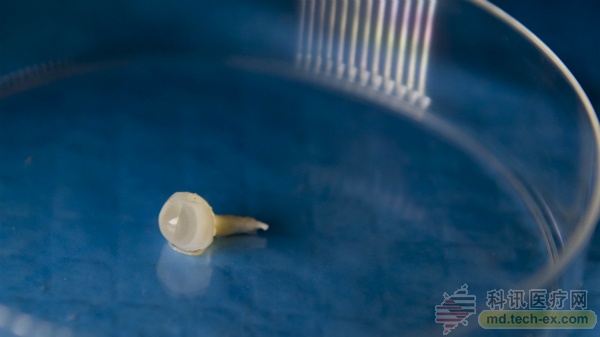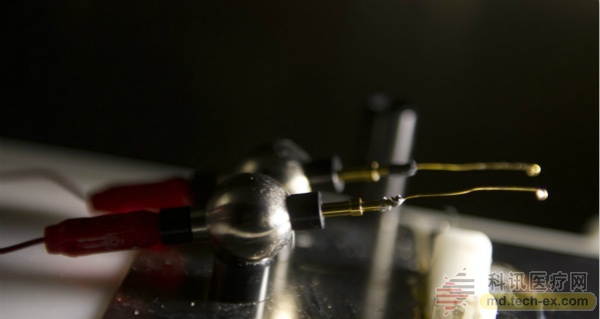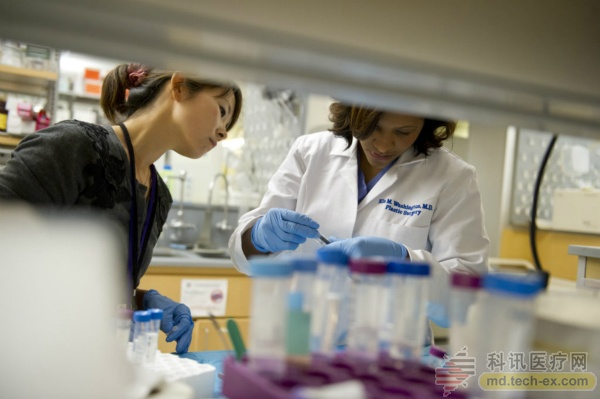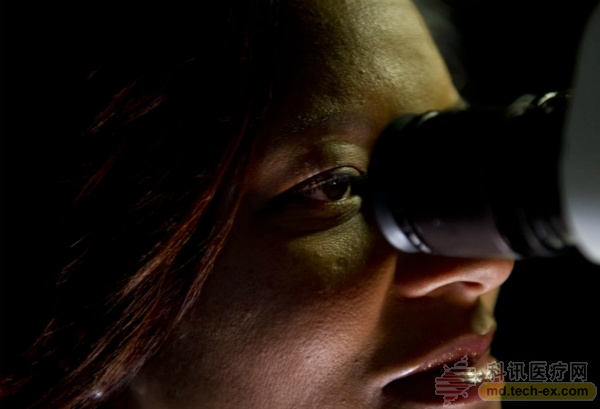Release date: 2016-12-05

For centuries, scientists have been experimenting with eye transplants. The early experiment felt like the diary of Mary Shelay, the mother of science fiction: the dog's eyeball was implanted into the mouse's groin, the mouse's eyeball was transplanted to the neck of another mouse, and the eyeball of a sheep was pulled. Out and put it in the eyes of another goat.
But unfortunately, there has never been a successful eye transplant. After all, the muscles, blood vessels and complex neural networks of the eyeball are directly connected to the brain. No one can be sure that it will not go wrong. It has been doomed that the past experiments will fail.
Now the goal of a team of transplant surgeons in Pittsburgh is to challenge this unresolved situation, and they hope to use the donor's eye to recover vision from patients with traumatic eye damage in a decade. Responsible for the project is Dr. Kia Washington, Plastic Surgeon and Research Team Leader at the University of Pittsburgh Medical Center. She said, "I hope that after 10 years, we will do a full eye transplant in humans. Although some people are very suspicious of this kind of experiment, it is considered an impossible moon landing plan."
The Department of Defense is particularly interested in Dr. Kia Washington's project and is the main sponsor of the project. Because traumatic eye damage is one of the most common combat injuries among American soldiers, nearly 1 million Americans suffer from eye damage due to eye damage, with soldiers occupying the vast majority. With the eye of the donors, I believe that many people will see the light again one day.
Restore vision
The first reported eyeball transplant attempt began in the 19th century and reached its peak during the Second World War. It was also due to war factors, but the results were not satisfactory. In 1977, a special working group at the National Eye Institute concluded after a well-thought-out laboratory investigation that a full-eye transplant was not successful. The problems of immune rejection, insufficient blood flow and lack of neurological function have been the three major problems that have plagued the success of the trial.
If the transplanted eye is to be seen, nerve connection is an essential part and the most complicated part of the eye transplant. The optic nerve connects the eye to the brain and is part of the central nervous system, directly along with the brain and spinal cord. Although nerves in other parts of the body, such as the nerves on the fingers or scalp, are easily regenerated after injury, the central nervous system is less elastic.
The team of Dr. Kia Washington has begun to break the coding of the optic nerve, allowing the eye cells to survive in vitro and re-grow in the animal. In recent decades, other advances in transplant medicine have made great strides, including immunosuppressive drugs and microsurgical techniques, which have laid the foundation for seemingly impossible eye transplants. Regarding the future of eyeball transplantation, she said, “Like the hand transplant surgery 10 years and 20 years ago, there are many doubts and the supporting technology is not mature. At present, eye transplants face the same problem.â€
Last month, the team took an important step forward by transplanting the rat eyeball to another rat, successfully connecting the optic nerve, and the organ has been healthy and viable for two years. This result has been published in the paper. Published. In the next phase, after receiving funding from the Department of Defense, the team is committed to progressively achieving rodent, primate, and ultimately human visual nerve recovery.

ERG machine is used to check nerve vitality in transplanted rat eyes
“This experimental development of the rat (eyeball and partial facial transplantation) model is a huge improvement. If the neural connection problem is successfully solved, she will be the first surgeon to complete this feat.†Kia Washington collaborator Wisconsin Rob Nickells, a professor of ophthalmology and visual science at the university, said.
Nerve problem
The key to eyeball transplantation is the fine optic nerve. The first obstacle that the Kia Washington team needs to address is to keep the nerves alive. "Once the eyeball is removed from the donor, the optic nerve cells will die soon," Nickells said.
In the mouse test, Nickells focused on the BAX gene, a key factor in coordinating cell death. In 2010, he found that mice without this gene did not lose any optic nerve cells after injury, even within a few years, whereas in normal mice, all cells died within three weeks.
Since then, Nickells has been working on how gene expression affects neuronal survival, and the scope of research is not just the BAX gene. In the future, he plans to start looking for a drug candidate that blocks BAX, which can theoretically be added to a solution that retains the donor's eye until it can be transferred to the recipient.
The second obstacle is to stimulate nerve growth after keeping the cells alive. The donor nerve cannot simply be connected to the recipient's nerve stump, but must re-grow from the eye to the brain. In adults, nerve cells lack this ability to grow, but Zhigang He and Nickells, professors of neurology at Harvard Medical School, try to reverse this growth clock.
"We need to find a way to recode old neurons and make them new neurons," he said. "Adult neurons don't have the ability to grow, we have to make them regenerate." In January of this year, Zhigang He and his team published an article showing that a new drug cocktail can achieve this goal in mice. The drug is capable of inhibiting tumor gene expression pathways and allowing neuronal growth. When the researchers removed the optic nerve outside the brain, the nerve re-healed within 28 days.
But can the mouse really see it? To test this problem, 8 weeks after the injury, the researchers showed the mice a rotating drum with vertical black and white stripes. Normal mice followed the stripes and turned their heads naturally. The mice with regenerative nerves in the experiment did not respond, indicating They can't see it. He realized that the reason for the failure to restore vision was that the newly growing nerves were different from the key mechanisms of normal nerves: they lacked insulation, so the electrical signals from the eyes quickly diminished before reaching the brain.

Dr. Washington (right) and Dr. Chiaki Komatsu (left) view the eyes of mice in the laboratory
Soon, Zhigang He realized that this was exactly the same as the neurological problems encountered in patients with multiple sclerosis. So the researchers fed these same mice with the 4-drug MS-AP and tested them again three hours later. Suddenly, the animals began to move their heads in response to the rotating drum. Blind mice can be seen again.
See the future
Andrew Huberman, an associate professor of neurobiology and ophthalmology at Stanford University, is also optimistic that it is entirely possible to achieve similar trials in humans within 10 years. "But I don't think that if you just transplant the eye of a recently dead person to someone else, the receptor will see it," Huberman said. “This will be a combination of biologics and engineering, such as combining donor eyeballs with neural stem cells.â€
Huberman said that if scientists can grow a new retina from the stem cells of the donor's eye, then fresh retinal neurons may be more likely to grow protrusions that can connect to the brain.
No matter what method is used, there are many challenges. Nickells has been studying mice with optic nerve destruction, and it remains to be seen whether the same principle will work when nerves are severed. Zhigang He's team has been able to re-grow the rodent optic nerve up to 1 cm. By comparison, the distance from the eye to the brain is a crack, which is much larger than this.
For Kia Washington, the next major work involved finding a non-invasive way to monitor the possibility of rejection of donor eyes in rats and primates. Previously, she had to use animal biopsy to look for rejection, as this is the standard way to monitor other types of transplants. Once she detects it, she wants to see how the eye responds to standard immunosuppressive drugs.

Dr. Kia Washington at the University of Pittsburgh Medical Center Laboratory
Washington predicts that the first population of all-eye transplants will be those with facial transplants. Many of these patients are blind and have to take immunosuppressive drugs, so the risk of transplanting eyeballs is low and the rate of return is high. Despite the obstacles, she believes that transplantation is the best way to treat vision loss in eye damage, especially in a traumatic environment, it can really restore function.
Source: Arterial Network
Ip Video Intercom Villa,Ip Video Intercom Made In China,Ip Video Intercom Villa Manufacturer,Video Ip Intercom Villa System, Ip Intercom System
Zhuhai Mingke Electronics Technology Co., Ltd , https://www.zhmkdz-electronics.com